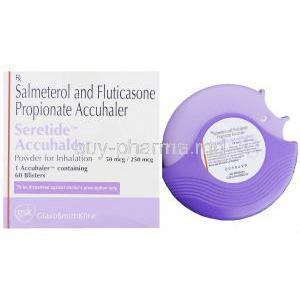I. Introduction
Overview of Ambroxol Syrup
Ambroxol Syrup is a potent mucolytic medication utilized primarily to alleviate symptoms associated with respiratory diseases. It acts by thinning and loosening mucus, making it easier to expel and thereby facilitating breathing.
Brief History and Development of the Medication
Developed as a derivative of the herb vasicine, Ambroxol was first synthesized in the 1960s. Since then, it has gained prominence for its efficacy in treating a variety of respiratory conditions.
II. Composition
Active Ingredients
The primary active component of Ambroxol Syrup is Ambroxol hydrochloride, which targets the mucous glands in the lungs to increase the production of respiratory fluids.
Inactive Ingredients and Excipients
Auxiliary substances such as flavorings, colorants, and preservatives are included to enhance the palatability and stability of the formulation.
III. Uses
Primary Indications
Ambroxol Syrup is predominantly prescribed for conditions like chronic bronchitis and asthmatic bronchitis, where mucus build-up is a significant problem.
Symptoms and Conditions Treated by Ambroxol Syrup
- Chronic obstructive pulmonary disease (COPD)
- Pneumonia
- Bronchiectasis
IV. Off-Label Use
Exploring Non-Approved Uses
Although not officially approved, some practitioners prescribe Ambroxol for conditions outside its standard indications, like sinusitis and certain ENT disorders.
Research and Studies Supporting Off-Label Use
Recent studies have demonstrated Ambroxol's potential in treating various ear, nose, and throat infections, supporting its versatility as a mucolytic agent.
V. How it Works
Mechanism of Action
Ambroxol enhances the secretion of surfactant, a substance necessary for lung function, and also breaks down the fiber network in mucus, making it less viscous.
Pharmacodynamics and Pharmacokinetics
Once ingested, Ambroxol is rapidly absorbed from the gastrointestinal tract, with its effects becoming evident within 30 minutes and peaking in about 2 to 3 hours.
VI. Dosage and Administration
Recommended Dosage for Different Age Groups
- Adults: 30 mg two to three times a day
- Children: Dosage adjusted according to body weight
Administration Methods and Techniques
The syrup can be administered directly or diluted in water. Consistent dosage at regular intervals ensures optimal results.
VII. Side Effects
Common Side Effects
- Mild gastrointestinal disturbances
- Transient taste alterations
- Rarely, allergic reactions
Managing Side Effects and When to Seek Help
Most side effects are mild and self-limiting. However, persistent symptoms or severe allergic reactions require immediate medical attention.
VIII. Important Precautions
Before Starting Ambroxol Syrup
Patients should discuss their full medical history with their healthcare provider, especially concerning liver and kidney function.
Conditions to Monitor
Regular monitoring of respiratory function and symptom progression is recommended during the course of treatment.
IX. Interactions
Drug-Drug Interactions
Caution is advised when combining Ambroxol with antibiotics as it may enhance the uptake of certain antibiotics by the lungs.
Drug-Food Interactions
No significant food interactions have been reported; however, the syrup should be taken with water to enhance absorption.
X. Warnings and Contraindications
Specific Health Conditions and Ambroxol Syrup
Patients with certain pre-existing conditions should exercise caution when using Ambroxol Syrup. These include severe renal and hepatic impairment, where dosage adjustments might be necessary to prevent exacerbation of the condition.
Interactions Leading to Contraindications
Contraindications may arise when Ambroxol is administered alongside specific types of medications such as certain antidepressants and antihistamines, due to the potential for adverse pharmacological interactions.
XI. Careful Administration
Special Populations and Considerations
Special attention is required when administering Ambroxol to patients with a history of gastric ulcers or seizure disorders, as it may aggravate these conditions.
Monitoring and Adjustments Needed
Continuous monitoring of symptom progression and adverse effects is crucial. Dosage adjustments may be required based on the patient's medical status and response to treatment.
XII. Handling and Storage
Proper Storage Conditions
Ambroxol Syrup should be stored at room temperature, away from direct sunlight and moisture to maintain its efficacy and extend its shelf life.
Shelf Life and Disposal
The typical shelf life of Ambroxol Syrup is two years from the date of manufacture. Expired or unused syrup should be disposed of properly to avoid environmental contamination.
XIII. Administration to Special Groups
Administration to Elderly Patients
Elderly patients may require lower dosages of Ambroxol, as they are more prone to adverse reactions and may have underlying health issues that affect drug metabolism.
Administration to Pregnant Women and Nursing Mothers
Ambroxol should be used during pregnancy or lactation only if the potential benefit justifies the potential risk to the fetus or infant, as per the guidance of a healthcare professional.
Administration to Children
While safe under certain conditions, the dosage for children should be carefully calculated based on body weight and should not exceed the recommended pediatric guidelines.
XIV. Overdose
Symptoms of Overdosage
- Nausea and vomiting
- Diarrhea
- Dizziness and headache
Immediate Actions and Antidotes
In the event of an overdose, immediate medical intervention is required. Supportive measures, such as gastric lavage and symptomatic treatment, are often employed to mitigate effects.
XV. Handling Precautions
Safety Measures for Handling Ambroxol Syrup
When handling Ambroxol, it is crucial to avoid contact with skin and eyes to prevent irritation. Proper safety attire, such as gloves and goggles, should be worn.
Avoiding Contamination and Misuse
Ensure the bottle cap is secured after use to prevent contamination of the syrup. Also, keep out of reach of children to avoid accidental ingestion.

















